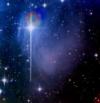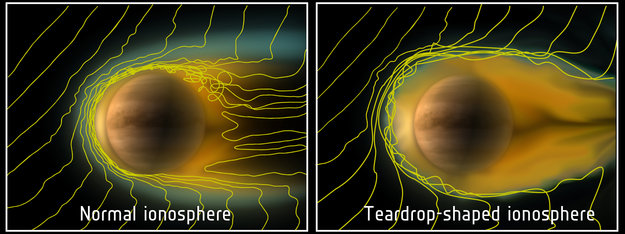

| Visitors Now: | |
| Total Visits: | |
| Total Stories: |

| Story Views | |
| Now: | |
| Last Hour: | |
| Last 24 Hours: | |
| Total: | |
When a Planet Behaves like a Comet / Comet-like ionosphere at Venus
Now I consider that this teardrop-shaped ionosphere of Venus …. which forms within 30–60 minutes after a normal high pressure solar wind has diminished …. which is said to stretch out in space, an estimated two Venus radii (meaning a straight line extending double the distance from the center of Venus) … is actually a deliberate and automatic release of those excess ionized gases, in which the sun’s solar activities periodically infuses these ions on the inside of Venus bubble of atmosphere … which occurs during the sun’s periodic badgering of Venus with released high pressure solar wind …
Of course this would only be possible if Venus was an active domicile cosmic host following repetitive functions of ancient commands instilled by the CREATOR, like Earth and Her repeating seasons and ventilation processes via volcanic activities ..
Contrary to today theory of planets being formed by bumping and grinding of colliding rocks and other solid masses .. a celestial knowing holds that all such giants of comic hosts … do materializes out of the “Sonic Signal seeding of space grounds …

Grounds which have been seeded with coded nano crystals and special dehydrated oxidized matter referred to as cosmic dust … the bringing together of these none electron elements materializes what every cosmic host the nano crystals are coded to bring about ..
And once the Cosmic host is formed … it’s fully operational and holds commands of it’s purpose and functions … all of which the design and works of creation was put in play by the CREATOR ….
Even some comets are actually dielectric orbs detached from their domicile “lunar day star” sphere … which are being pushed in their specific orbits buy the deflating of an inner field of quantum plasma held in the state of cold fusion ….
When a Planet Behaves like a Comet / Comet-like ionosphere at Venus

CREDIT: ESA/Wei et al.
HERE The planet Venus sometimes looks less like a planet and more like a comet, scientists say.
Scientists with the European Space Agency have discovered that a part of the upper atmosphere of Venus — its ionosphere — acts surprisingly different depending on daily changes in the sun’s weather. The side of Venus’ ionosphere that faces away from the sun can billow outward like the tail of a comet, while the side facing the star remains tightly compacted, researchers said.
The discovery was made using ESA’s Venus Express spacecraft, which observed Venus’s ionosphere during a period of low solar wind in 2010 to see exactly how the sun affects the way the planet’s atmosphere functions. In 2013, the sun is expected to reach the peak of its 11-year solar activity cycle.



